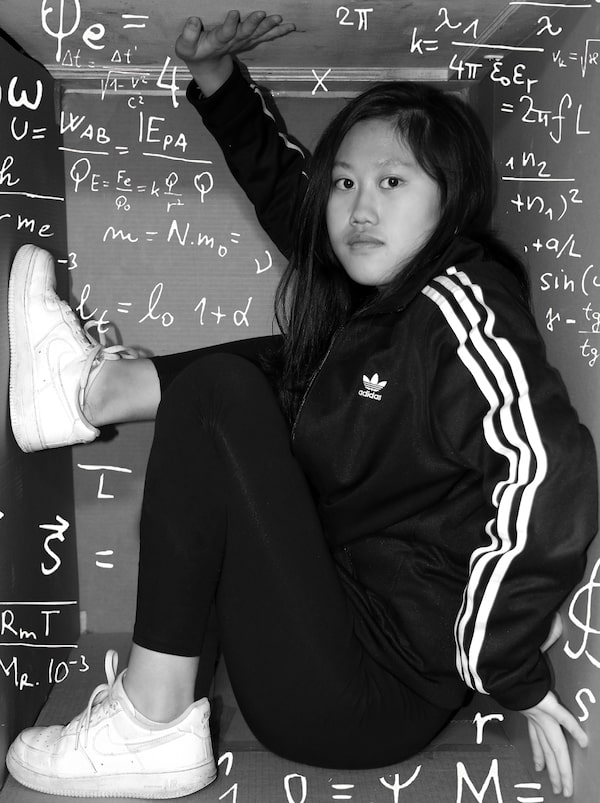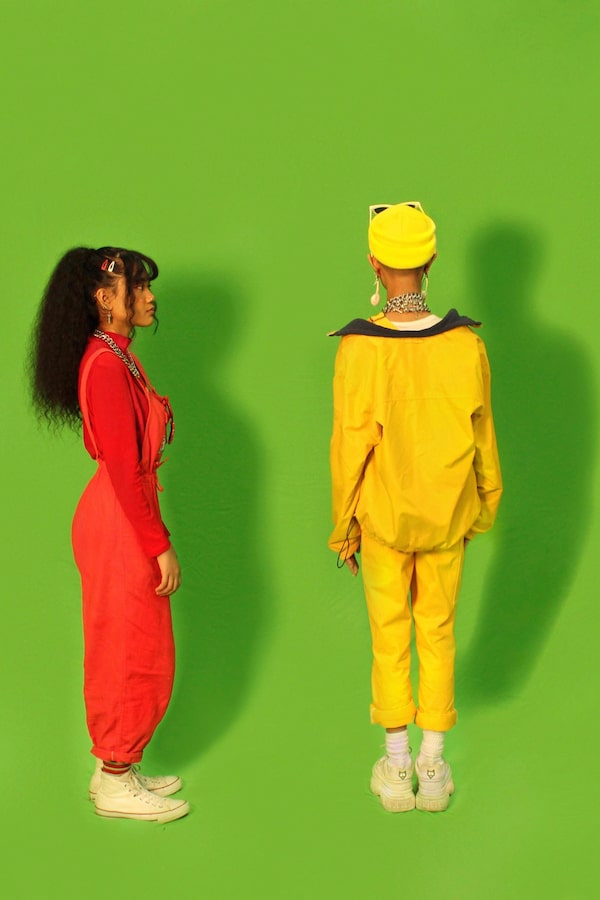
For this year’s Magenta-funded student photography incubator, Loriann Parr of Cape Dorset, NL, explored the boundaries set by elders and how those boundaries shift as one matures and grows. Her piece illustrates the story of the Northern Lights and how when she was a child, her elders told her that if she didn’t wear a hat, the aurora borealis would take off her head.Loriann Parr
When MaryAnn Camilleri was 17, her camera was a Ricoh FF-90, a humble plastic thing with a built-in flash. One of her teachers wasn’t using it, so he gave it to her to experiment with. The gift was profound.
“It changed everything,” Camilleri says. “It brought my passion for photography to life.”
It’s still there for Camilleri, a dogged promoter of underrepresented photographers. In 2004, she founded the Magenta Foundation, a charitable arts-publishing house that champions the work of emerging artists in an international context through its numerous exhibitions and publications.
Seven years ago, the Flash Forward Incubator for Canadian high-school students was introduced under the Magenta umbrella. Through an online platform, hands-on mentorships and funding to equip school arts programming, the incubator brings digital photography into the high-school curriculum. The program culminates in a series of exhibitions (from Vancouver to Calgary to Toronto to Newfoundland) that raise funds through silent auctions.
“It’s shocking,” Camilleri says, laughing at the memories of herself as a teenage photographer. “I was nowhere near the level the kids are today.”
The kids today, of course, have access to equipment that previous generations did not. “It’s changed the visual language of our world,” Camilleri says, referring to the ubiquity of the mobile-phone camera. “It’s allowed us to communicate in different ways, to a different audience and to a wider audience.”
There’s the school of thought that believes the accessibility of cameras has cheapened the art, that everyone in Instagram Nation fancies themselves a photographer. Camilleri scoffs at the notion. “I hate that. Visual literacy is amazing, you know? We live in an exceptional time.”
The incubator is an intense program, according to Camilleri. “It’s a full year – some kids don’t stick with it. But the ones who really want to learn and take advantage of what we’re offering, they really work hard.”
This year, 400 students from nearly 30 schools took part in the incubator, from Vancouver Island to St. John’s, and north to Cape Dorset, Nunavut. “The incubator is a launching pad,” Camilleri says. “We’re inclusive, and we’re empowering future generations of artists.”
The incubator’s poster-child success story is 2016 participant Rachel Burns, a graduate from the Etobicoke School of the Arts (the first incubator participant) and a rising photography star who, after receiving a combined $2.2-million in scholarship offers from the 38 art schools to which she applied, settled on OCAD University for further studies. Last year, she had her first solo show at Toronto’s General Hardware Contemporary.
“When a brand like Magenta tells the world, ‘this is someone you should watch for,’ life patterns change," Camilleri says. “We’ve seen students who want to be the next Edward Burtynsky. The incubator is the cultivation to help them achieve that.”
How queer Muslims are rewriting their stories
Flash Forward Incubator participants in their own words – and images
The Flash Forward Incubator, a digital-photography program that incorporates mixed media, was established in 2012 by Canadian arts cultivator the Magenta Foundation to support, develop and showcase high-school-age photographers. This year, participating students were asked to reflect on the meaning of boundaries – literally or figuratively – and to consider the role they play in the world today.
Belén Quiles Vozmediano (Mark R. Isfeld Secondary School, Courtenay, B.C.): Boundaries and Pressures Put on Youth

I decided to take a picture of my friend feeling and looking trapped by the math equations surrounding her. It represents how teenagers often feel trapped by the boundaries and pressures that are put on them by parents, school and life. Everyone thinks we don’t care about the things that are going on and they believe we just do whatever we want, endangering our futures, but this isn’t the truth. We do feel these boundaries and pressures. We are always trying to do our best to reach the expectations people have on us and sometimes we struggle to do this.
Jezreel Ricafort (John Polanyi Collegiate Institute, Toronto): Tunnel Vision

Magenta Foundation
I am a Filipino-Canadian currently in my senior year of high school. Sometimes I think that people in my community live like we’re constantly walking on thin ice. We can speak, but can’t speak up too much. We are afraid that we might stomp on others’ opinions or appear as though we’re better than everyone. The moment we do speak up, we feel like our voices aren’t heard. We are rarely shown in the media and it seems like we aren’t validated. This picture portrays Asians in red and the people that refuse to listen or look at us in yellow. We want to feel like we belong and that we, as well as our struggles, matter.
Grace Way (Holy Heart of Mary High School, St John’s): In a Boxed Garden

A boundary for me is a feeling: the fear of disappointing people or the fear of unhappiness for myself. To me, my work shows the box that we have all created – the box made of stereotypes, opinions and what society says is acceptable. The important thing to remember is that we can choose whether we confine ourselves to that box. Maybe one day we can ditch the box altogether so that we do not have to worry about being impressive or accepted; we can just be happy doing what we love.
Jillian Carter (Holy Heart of Mary High School, St John’s): No Filter

I chose to explore the negative boundaries of social media. Some girls portray a perfect life on social-media platforms like Instagram, and try to make other girls jealous of their faces and bodies, creating self-esteem issues for teenagers. When in reality, those girls edit every image to look perfect. It is not real. The idea for this project was inspired by my little sister. She wears makeup, buys new clothes and tells me she wishes she looked like the models on Instagram. Featured in my photos is my 13-year-old sister, proving we are all beautiful – makeup or no makeup, filter or no filter.
Kenisha Anderson (Georges P. Vanier Secondary, Courtenay, B.C.): Protector

Photography has become an important way for me to capture and document my unique family and our life events. To me, this work is a means to support my two brothers, who are First Nations people, in telling their story without having to use words to express it. In this photo, I have captured the passion that my brothers feel toward protecting Indigenous land and that the rights to their culture are not for sale. I’m showing one of my brothers – although he appears alone, he is arm-in-arm with all other Indigenous protectors.
Layla Berih (Shoot for Peace photography program, Regent Park, Toronto): Shadow Defense

Magenta Foundation
My photo represents the cycle of lost generations of youth in communities, Regent Park in particular. The photo plays with spacing, emotion and lighting; allowing one-half of their faces to be hidden in shadow. The theme of boundaries seeps through the photo through the limitation of their potential, due to where they grew up as well as what is expected of them. This creates a perimeter that cuts off their growth beyond their community. I have seen many people in my community get lost in the idea that life only pans out as far as the streets they live on, the basketball games they watch and the music they listen to.




 Brad Wheeler
Brad Wheeler